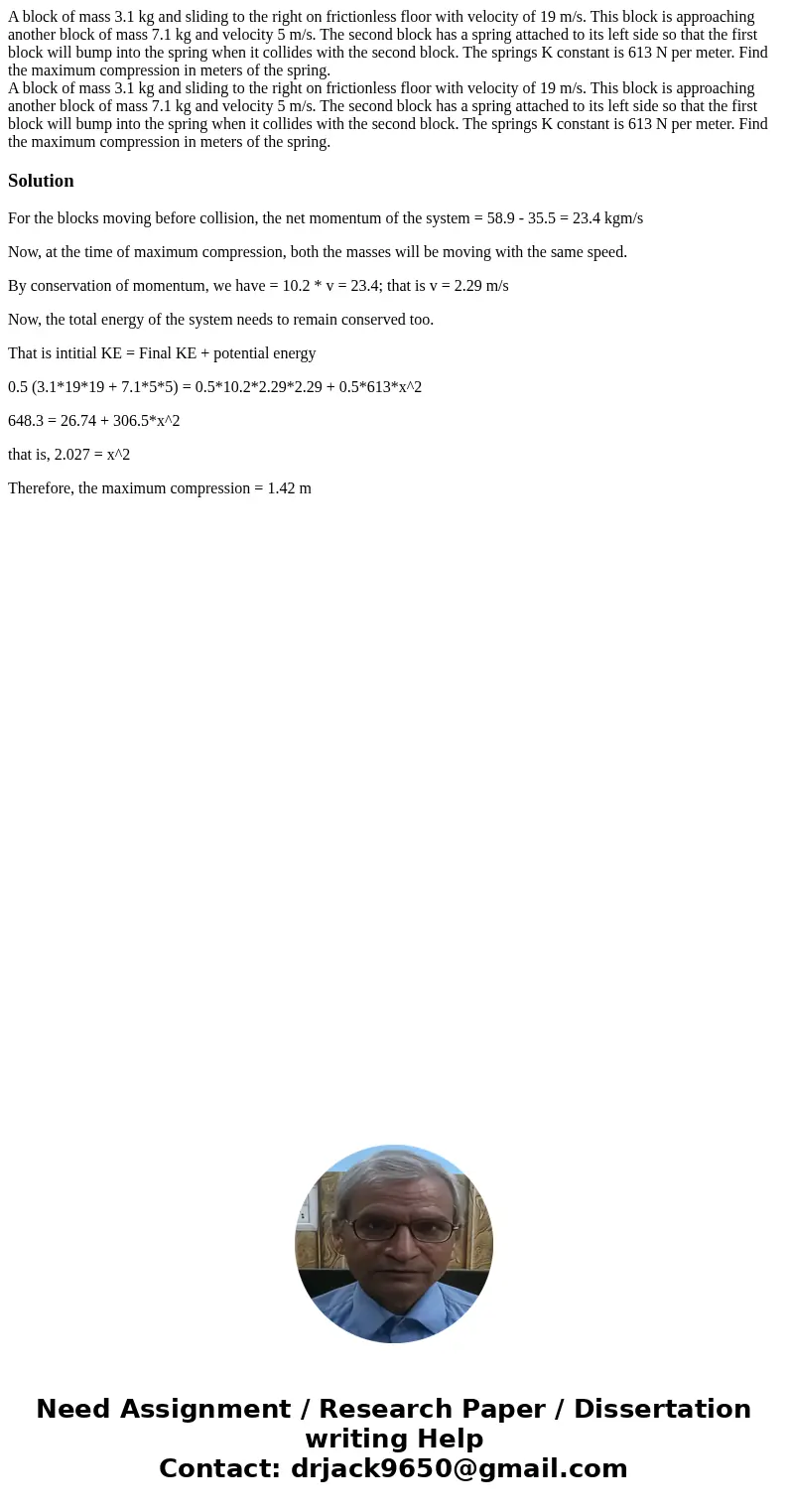A block of mass 31 kg and sliding to the right on frictionle
A block of mass 3.1 kg and sliding to the right on frictionless floor with velocity of 19 m/s. This block is approaching another block of mass 7.1 kg and velocity 5 m/s. The second block has a spring attached to its left side so that the first block will bump into the spring when it collides with the second block. The springs K constant is 613 N per meter. Find the maximum compression in meters of the spring.
A block of mass 3.1 kg and sliding to the right on frictionless floor with velocity of 19 m/s. This block is approaching another block of mass 7.1 kg and velocity 5 m/s. The second block has a spring attached to its left side so that the first block will bump into the spring when it collides with the second block. The springs K constant is 613 N per meter. Find the maximum compression in meters of the spring.
Solution
For the blocks moving before collision, the net momentum of the system = 58.9 - 35.5 = 23.4 kgm/s
Now, at the time of maximum compression, both the masses will be moving with the same speed.
By conservation of momentum, we have = 10.2 * v = 23.4; that is v = 2.29 m/s
Now, the total energy of the system needs to remain conserved too.
That is intitial KE = Final KE + potential energy
0.5 (3.1*19*19 + 7.1*5*5) = 0.5*10.2*2.29*2.29 + 0.5*613*x^2
648.3 = 26.74 + 306.5*x^2
that is, 2.027 = x^2
Therefore, the maximum compression = 1.42 m

 Homework Sourse
Homework Sourse